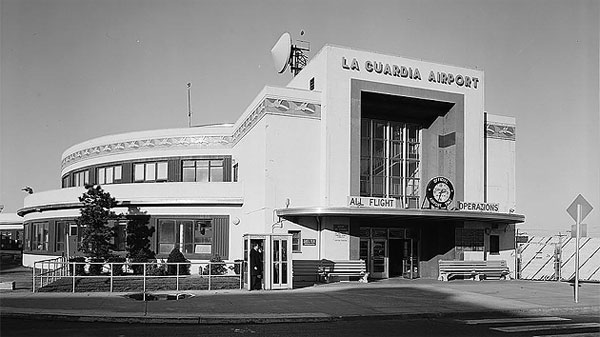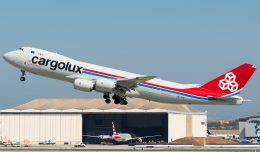| Airport use | Open to the public |
|---|---|
| Activation date | 01/1944 |
| Sectional chart | Seattle |
| Control tower | Yes |
| ARTCC | SEATTLE CENTER |
| FSS | SEATTLE FLIGHT SERVICE STATION |
| NOTAMs facility | SEA (NOTAM-D service available) |
| Attendance | Continuous |
| Wind indicator | Lighted |
| Segmented circle | No |
| Lights | Dusk-Dawn |
| Beacon | White-green (lighted land airport) |
| Landing fee | Yes |
| Fire and rescue | ARFF index E |
| International operations | customs landing rights airport |
| Runway 16L/34R | |||||||||
|---|---|---|---|---|---|---|---|---|---|
| Dimensions | 11901 x 150 ft. / 3627 x 46 m | ||||||||
| Surface | asphalt/grooved, in poor condition | ||||||||
| Weight bearing capacity |
|
||||||||
| Instrument approach | Runway 16L: ILS/DME | ||||||||
| Runway 34R: ILS/DME | |||||||||
| Runway 16C/34C | |||||||||
|---|---|---|---|---|---|---|---|---|---|
| Dimensions | 9426 x 150 ft. / 2873 x 46 m | ||||||||
| Surface | concrete/grooved, in fair condition | ||||||||
| Weight bearing capacity |
|
||||||||
| Runway edge lights | high intensity | ||||||||
| Instrument approach | Runway 16C: ILS/DME | ||||||||
| Runway 34C: ILS/DME | |||||||||
| Runway 16R/34L | |||||||||
|---|---|---|---|---|---|---|---|---|---|
| Dimensions | 8500 x 150 ft. / 2591 x 46 m | ||||||||
| Surface | concrete/grooved, in good condition | ||||||||
| Weight bearing capacity |
|
||||||||
| Runway edge lights | high intensity | ||||||||
| Instrument approach | Runway 16R: ILS/DME | ||||||||
| Runway 34L: ILS/DME | |||||||||
| Ownership | Publicly-owned |
|---|---|
| Owner | PORT OF SEATTLE BOX 1209 SEATTLE, WA 98111 Phone 206-728-3201 |
| Manager | MARK REIS BOX 68727 SEATTLE, WA 98168 Phone 206-433-4682 |
SEA Live Traffic |
SEA Sectional ChartFlight Planning at SkyVector.com
|
| Seattle-Tacoma Airport was constructed by the Port of Seattle in 1944 to serve civilians of the region, after the U.S. military took control of Boeing Field for use in World War II. The Port received $1 million from the Civil Aeronautics Administration to build the airport, and $100,000 from the City of Tacoma. Commercial use of the airport began after the war ended, with the first scheduled flights occurring in 1947. Two years later, the word International was added to the airport’s name as Northwest Airlines began direct service to Tokyo. The runway was lengthened twice, first in 1959 to allow use by jets, and again in 1961 to handle increased traffic for the upcoming Century 21 World’s Fair. The current terminal complex was built in 1959. In 1966, SAS inaugurated the airport’s first non-stop route to Europe. The Port embarked on a major expansion plan from 1967 to 1973, adding a second runway, a parking garage, two satellite terminals, and other improvements to the airport.Numerous residents of the surrounding area filed lawsuits against the Port in the early 1970s, complaining of noise, vibration, smoke, and other problems caused by the airport. The Port, together with the government of King County, adopted the Sea-Tac Communities Plan in 1976 to address the airport’s impact on the area and guide its future development. The Port spent more than $100 million over the next decade to buy out homes and school buildings in the immediate vicinity, and soundproof others nearby. In the mid 1980s Sea-Tac participated in the airport noise compatibility program initiated by Congress in 1979. Airport noise contours were developed, real estate was purchased and some homes were retrofitted to achieve noise mitigation.In 1978, the U.S. ended airline regulation. Subsequently, U.S. airlines were allowed to determine routes and fares without government approval. Deregulation resulted in new service to Seattle, including TWA, which was the fourth largest U.S. airline.
FAA diagram of Sea-Tac AirportAfter the death of U.S. Senator “Scoop” Jackson in 1983, the Seattle Port Commission voted to change the name of the airport to Henry M. Jackson International Airport, ostensibly to honor the late Senator. However, denizens of Tacoma interpreted the name change as an insult to their community —the second time in the airport’s history that the port authorities had attempted to remove “Tacoma” from the official name. But the $100,000 that Tacoma had provided for the airport’s construction during World War II had come with an explicit promise that the city would be included in the airport’s name. The City of Tacoma eventually prevailed in their attempt to return the long-standing moniker, and the name reverted to Sea-Tac early in 1984. A view of the SeaTac Airport in September of 2007, as construction of the new runway 16R/34L was underway. The runway opened in November of 2008. Starting in the late 1980s, the Port of Seattle and a council representing local county governments considered the future of air traffic in the region and predicted that Sea-Tac Airport could reach capacity by 2000. The planning committee concluded in 1992 that the best solution was to add a third runway to Sea-Tac and construct a supplemental two-runway airport in one of the neighboring counties. Members of the community strongly opposed a third runway, as did Highline School District and the cities of Des Moines, Burien, Federal Way, Tukwila, and Normandy Park, but a 1994 study concluded there were no feasible sites for an additional airport. The Port of Seattle approved a plan for the new runway in 1996, prompting a lawsuit from opponents. The Port secured the necessary permits by agreeing to noise reduction programs and environmental protections. Runway opponents appealed these permits, but dropped their challenges in 2004. The runway opened on November 20, 2008, with a total construction cost of $1.1 billion.
|
This page contains excerpts of Wikipedia entry Seattle-Tacoma International Airport, shared under the GNU Free Documentation License. |










